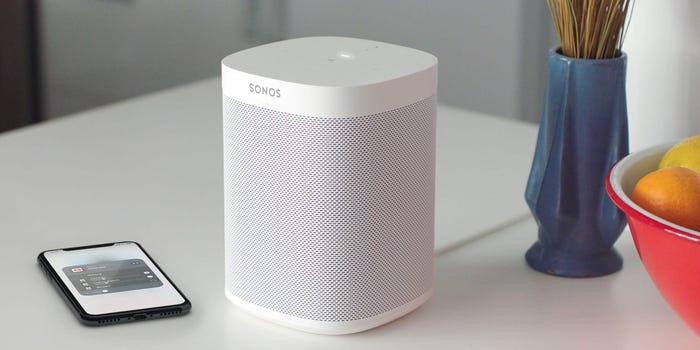Sonos today announced measures to improve the longevity and efficiency of its speakers and other products. It’s part of the company’s bigger aim to become more environmentally friendly, with an emphasis on reducing e-waste and pollutants that contributes to climate change.
Sonos’ new ambitions include making its products easier to repair and recycle, which will help them last longer. Starting in 2023, the business plans to implement a “Design for Disassembly” methodology that will guide the creation of all new speakers. This includes adjustments such as the substitution of fasteners for adhesives, which can make it easier for customers to disassemble Sonos items for repair.
However, there isn’t much information on this programme available yet. When asked, Sonos declined to say whether replacement parts and repair instructions will be accessible, facts that will determine how repairable its gadgets are in actuality. However, according to Deji Olukotun, Sonos head of policy and corporate social responsibility, the programme is designed to “make it easier to repair, refurbish and, eventually, recycle future Sonos products.”
By the end of 2023, the company intends to use post-consumer recycled plastic in all of its goods. While this may prevent some plastics from ending up in landfills, oceans, or the stomachs of animals, recycling has proven to be a meagre answer to the world’s plastic pollution problem. When plastic is re-hashed, it degrades, which is why most tech businesses must mix recycled and virgin polymers to create new items. Some experts are concerned that a strong market for recycled plastics will lead to increased demand for new plastics.
Sonos claims that by 2023, all of its products will include “sleep mode,” a function that reduces power consumption while the gadget is turned off. Some companies already offer sleep mode on their speakers, but Sonos only added it to their Roam speaker this year. The goal is for Sonos products to utilise less than 2 watts while they are not in use.
Sonos is tackling the company’s largest source of planet-warming carbon dioxide emissions by making its speakers more energy-efficient. According to Sonos, the energy its products consume during their lifetime accounts for around 75% of the company’s carbon footprint. This is in contrast to consumer electronics in general, where manufacturing accounts for up to 80% of CO2 emissions, according to a Greenpeace analysis. Sonos claims that its supply chains and consumers’ energy use resulted in CO2 emissions equivalent to 267,528 cars driven over a year.
In addition, the corporation is establishing more long-term goals for combating climate change. By 2040, Sonos hopes to reduce emissions from its devices’ energy use by 45 percent, and by that time, it hopes to have completely eliminated its carbon footprint through a combination of carbon offsets and new CO2 removal technologies.
However, paying for forests to naturally absorb carbon dioxide to mitigate climate pollution has a shaky track record. And CO2 extraction technologies haven’t scaled up to fulfil the demands of all the industries promising to utilise them to erase their polluting legacy. That makes it all the more important for Sonos to start focusing on lowering its environmental footprint.
- Top 10 Big Cities Where Retirement Savings of $1 Million Won’t Long Last - April 24, 2024
- The Top 5 Ethical Companies for 2024 Investment - April 24, 2024
- Top 5 Quickest-Declining Countries in Asia - April 24, 2024





